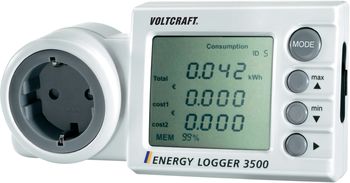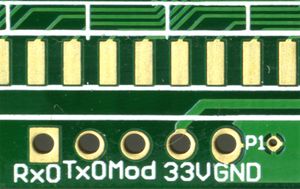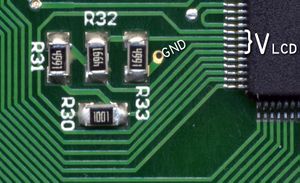Energy Logger 3500
Contents
Technical Data
Operating voltage 230 V/AC Performance measurement display 0.1 -3500 W Performance consumption display 0.000 - 9999 kWh Display 3-cell with 4 positions each Tariff range 0,000 - 9,999 Buffer battery 3 V, CR1620 Operating temperature 10 to 50°C Weight ca. 240 g Dimensions (LxWxH) 164 x 82 x 83 (mm)
Accuracy
5 - 3500 W (± 1% + 1 count) 2 -5 W (± 5% + 1 count) < 2 W (±15% + 1 count)
Measurement tolerances
Statement of accuracy in ± (% of reading + display error in counts (= number of smallest points)). The accuracy is valid at a temperature of +23°C ± 5°C, and at a relative humidity of less than 75 %, non-condensing.
Internal operation
File format
The meter reads from and writes to several files on the flashcard. So far there are only 3 types of files for the Energy Logger 3500. There is a 102-Bytes info-file, a number of files with the meassured data (max 10564 Bytes per file) and it is possible to configure the device with a 20-Bytes file called SETUPEL3.BIN.
The .bin-files have each the following structure:
Info-file
- Exactly 102 bytes in size
- Filename consists of <loggerID><#sec since start of year>.bin
- LoggerID = [a..j], a=0, b=1, ...
- First 5 Bytes are: "INFO:" (hex-values: 49 4E 46 4F 3A)
The file contains various information stored in the logger at the moment of dump:
- Total power consumption(kwh).
- Total recorded time(Hour).
- Total ON time(hour).
- 10 day history of consumed power.
- 10 day history of record time.
- 10 day history of ON time.
- ID number of unit.
- Value of tariff 1 & 2
- Time & Date of initial setting.
Reverse-engineered fileformat
- red (0x05-0x07) and (0x0E-0x10): total power consumption, big endian, in watt-hour (devide by 1000 for kWh). The program Conrad supplied only shows the double amount (0,188 kWh instead of 0,094 kWh).
- blue (0x54): logger ID (0..9) First letter of the filename is also an indication of the logger-ID (A-J)
- green (0x5D): A date. It looks like it is the start of the meassurement.
- Hex: 12 39 01 1D 08
- Dec: 18 39 1 29 08 In the right notation: 29-01-2008 18:39, Is just before the first measured sample. N.B. Date-notation is different from the datafile.
- bold (0x55-0x58): The set kWh-price of "Cost1" (€ 1,234 in this example)
- underlined (0x59-0x5C): The set kWh-price of "Cost2" (€ 5,678 in this example)
More info about the format (in dutch)
FileFormat according to Conrad
In february 2009, Conrad silently uploaded the documentation about the information stored in the files.
Data-file
- Filesize is max 10564 Bytes.
- Maximum is 2110 samples per file (max numbers of samples seen in 1 file is 2105), which is about 35 hours of data.
- First 3 Bytes are: hex-values E0 C5 EA.
- In the file there is at least one time the following sequence:
- 3 bytes initstring (E0 C5 EA)
- Date-/time-stamp
- 1 or more samples
- 0-3 Bytes from a partly written sample
- 0 or more times hex-valuess FF FF FF FF
- File ends with at least FF FF FF FF and if there is a following file, the rest of the file is filled with FF's until the filesize is 10564 Bytes.
So the grammar is:
((Init timestamp (sample)+)+ FFF(F)+)+EOF
With:
- Init = E0 C5 EA
- timestamp = 5 Bytes
- Sample = 5 Bytes
- ()+ = my notation of occurring at least 1 time, what is between ()
- F = hexvalue FF, decimal value 255
- EOF = end of file
Timestamp is as follows:
- Month = byte(0)
- Day = byte(1)
- Year = 2000 + byte(2)
- Hour = byte(3)
- Minute = byte(4)
Sample is as follows:
- Voltage (in tenths of volt) = byte(0) *256 + byte(1)
- Current (in mA) = byte(2) *256 + byte(3)
- PowerFactor (in procent) = byte(4)
Example hexdump:
00000000 e0 c5 ea 01 1d 08 12 3b 08 b2 00 43 41 08 b6 00 |.......;...CA...| 00000010 43 41 08 ac 00 43 41 08 af 00 44 41 08 b2 00 43 |CA...CA...DA...C| 00000020 41 08 ab 00 43 41 08 b7 00 44 41 08 b2 00 44 41 |A...CA...DA...DA| 00000030 08 b4 00 44 41 08 b1 00 44 41 08 b0 00 43 41 08 |...DA...DA...CA.| 00000040 ae 00 44 41 08 b4 00 43 41 08 b2 00 44 41 08 b1 |..DA...CA...DA..| 00000050 00 44 41 08 b2 00 44 41 08 ba 00 43 41 08 b8 00 |.DA...DA...CA...| 00000060 44 41 08 b9 00 44 41 08 b9 00 44 41 FF FF FF FF |DA...DA...DA....|
Settings-file
- Exactly 20 bytes in size
- Filename is "setupel3.bin"
- Byte 0..2 = b8 ad f2 (hexvalue)
- Byte 3 = loggerID
- Byte 4 = timeformaat (1=12h, 2=24h)
- Byte 5 = date-notation (1=mm/dd/yy of 2=dd/mm/yy)
- Byte 6 = Time in hours
- Byte 7 = Time in minutes
- Byte 8 = month
- Byte 9 = day
- Byte 10= year (with an offset of 2000)
- Byte 11= currency (1=Pound, 2=SwishFranc, 4=$, 8=€)
- Byte 12-15= decimals of tarif1 (max value is 9,999)
- Byte 16-19= decimals of tarif2 (max value is 9,999)
Example hexdump of a SETUPEL3.bin-file:
00000000 b8 ad f2 00 02 01 0b 32 02 1c 08 08 01 00 00 00 |.......2........| 00000010 02 00 00 00 |....|
Electrical construction
The heart of the Energy Logger 3500 is the ps1000 made by Archmeter.
Mods
Serial port
Signalpoints on the pcb.
- Rx0 - Rx-signal, to pin 115 (P3.0) on the chip
- Tx0 - Tx-signal, to pin 116 (P3.1) on the chip
- Mod - Select mode, to pin 18 (Mode1) on the chip [to pin 17 (Mode0) on Energy Logger 4000]
- 33V - Perhaps 3,3V ?
- GND - Ground
Contrast enhancement of the LCD
Resistor R30 controls the contrast of the display. The maximum contrast can be set when shortening R30 (making it 0 Ohm). It is possible to exchange R30 with a 10k-potmeter, but make sure you take isolation into account. So make sure you cannot touch the electrical parts of the print when the device is plugged into the wallsocket. It is quite possible there is no adequate galvanic isolation between the high-voltage lines and the rest of the print.
Typical issues
The meter has some strange quircks which become apparent when using it for a longer period.
SD-card
The meter writes to the SD-card on a very low level. This is fine, but it puts some limits on the kind of SD-cards which can be used. The SD-card must have a size of 512MB - 2 GB. This has to do with the formatted blocksize on the SD-card. When using smaller cards, the files cannot be read if they're smaller than 1 blocksize. (e.g. the 102-byte info-file)
Sometimes the data is corrupted on the SD-card. This can be caused by interferrence from e.g. a switching powersupply of a laptop or PC near the meter when dumping the data.
The writespeed to the SD-card is about 1000 Bytes/sec. With about 5 bytes per logged minute, we're talking about over 7 seconds of write-time for each logged day of 24 hours.
The data is not cleared from the device when dumped to the SD-card.
Clock
The internal clock of the meter stops when writing data to the SD-card. This can cause the clock to be off a few minutes each month, or even more when the data is not cleared after dumping. (the entire logged data is dumped to the card each time, even when it was dumped before) The clock-skew is about 7 seconds for each 24 hours of logged data. This can be over 3 minute 40 for a month worth of data for each time the data is dumped to the SD-card.
SETUPEL3.BIN
It is possible to configure the meter using a 20-byte file called SETUPEL3.BIN. When you insert a SD-card into the meter with this file written on it, it will be used to configure the device. Like setting the date and time, the costs per kWh, currency and logger-ID.
When uploading this file all previous logged data will be erased. Also the file will be deleted from the SD-card.
This is quite impractical, since you have to dump the data to the SD-card, insert it into the computer to put a generated SETUPEL3.BIN file on it and place the SD-card into the meter again.
Stability
The first versions of the Energy Logger 3500 (sold before the last week of july 2008) have some issues with stability. It is possible the meter will predict a consumption of 9999kWh for all intervals (day/week/month/year)
This is probably caused by some spikes or short interruptions on the power-grid. Often when these errors occur, the lowest recorded net-voltage is below 90V and the min. or max. net-frequency are more than 5% off from the normal 50Hz. (e.g. 47 or 57 Hz)
Until now, there is no known firmware-update which can be done by the user and the meter has to be exchanged by Conrad.
Official datasheet
Conrad placed the entire datasheet, describing the fileformat online.
Links
The Energy Logger 3500 is sold by Conrad.
- Article information on the Conrad-site
- Documents and software-updates
- "Energiemeters... deel hier je ervaringen"-topic @ Tweakers.net - The rev. engineering of the fileformat is discussed in this topic (all Dutch)
- Topic about this meter on the German forum "MeiserKuehler"
- Testresults of various Energymeters, including the EL3500



